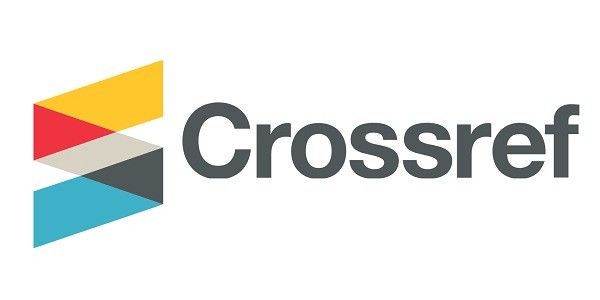Abstract
When visiting museums, we meet various types of physical barriers, such as glass vitrines, railings, and extended ropes, which have been put there to protect the objects on display. Such barriers are often accused of creating an unfavourable distance to museum objects but can also be thought of in more positive terms, as this article will seek to demonstrate. Based on analyses of museum display boundaries at Rosenborg Castle in Copenhagen, where visitors can experience objects from The Royal Danish Collection within historic interiors, the article looks into the effects of such boundaries on the museum experience. The article explores the particular threshold experiences that take place at Rosenborg where you constantly fluctuate between, on the one side, looking at objects and interiors that have been put on display in front of you, and, on the other, being inside the historic interiors. It argues that this spatial ambiguity opens up productive, albeit obscure, in-between spaces for the museum visitor to inhabit and points to the importance of truly attending to the design of display boundaries when creating museum exhibitions.
Publication Date
7-31-2021
References
Atmodiwirjo, P., & Yatmo, Y. A. (2019). Interiority: At the threshold. Interiority,2(2), 107–111. https://doi.org/10.7454/in.v2i2.66
Aynsley, J. (2006). The modern period room, a contradiction in terms? In P. Sparke, B. Martin, & T. Keeble (Eds.), The modern period room: The construction of the exhibited interior 1870–1950 (pp. 8–30). Routledge.
Bencard, M. (1984). The Royal Danish Collections at Rosenborg. The International Journal of Museum Management and Curatorship, 3(3), 221–236. https://doi.org/10.1080/09647778409514921
Bencard, M. (2001). Appendix: A note on the Rosenborg Collection in Copenhagen. In O. Impey & A. Macgregor (Eds.), The origins of museums: The cabinet of curiosities in sixteenth- and seventeenth-century Europe (pp. 186–187). House of Stratus.
Benjamin, W. (1999). The arcades project (H. Eiland & K. McLaughlin, Trans.). Harvard University Press. (Original work published 1982)
Boettger, T. (2014). Threshold spaces: Transitions in architecture: Analysis and design tools. Birkhäuser.
Brown, K. (2018). Touch, taste, smell: Fostering museum visitor engagement with multisensory spaces. In G. Marinic (Ed.), The interior architecture theory reader (pp. 202–211). Routledge.
Candlin, F. (2006). The dubious inheritance of touch: Art history and museum access. Journal of Visual Culture, 5(2), 137–154. https://doi.org/10.1177/1470412906066906
Classen, C., & Howes, D. (2006). The museum as sensescape: Western sensibilities and indigenous artifacts. In E. Edwards, C. Gosden, & R. B. Phillips (Eds.), Sensible objects: Colonialism, museums and material culture (pp. 199–122). Routledge.
Feldman, J. D. (2006). Contact points: Museums and the lost body problem. In E. Edwards, C. Gosden, & R. Phillips (Eds.), Sensible objects: Colonialism, museums and material culture (pp. 245–268). Routledge.
Gurian, E. H. (2005). Threshold fear. In S. Macleod (Ed.), Reshaping the museum: Architecture, design, exhibitions (pp. 203–214). Routledge.
Keeble, T. (2006). Introduction. In P. Sparke, B. Martin, & T. Keeble (Eds.), The modern period room: The construction of the exhibited interior 1870–1950 (pp. 1–7). Routledge.
Parry, R., Page, R., & Moseley, A. (Eds.). (2018). Museum thresholds: The design and media of arrival. Routledge.
Petrov, J. (2011). Playing dress-up: Inhabiting imagined spaces through museum objects. In S. Dudley, A. J. Barnes, J. Binnie, J. Petrov, & J. Walklate (Eds.), The thing about museums: Objects and experience, representation and contestation (pp. 231–249). Routledge.
Pilegaard, A. (2017). Encountering the vitrine: Distance and proximity effects in museum vitrines. The Journal Nordic Museology, (2), 5–21. https://doi.org/10.5617/nm.6342
Pilegaard, A. (2020). Through the lens of the Glass Cabinet: Entering the material realm of museum objects. Interiors, 10(3), 172–190. https://doi.org/10.1080/20419112.2020.1833552
Pye, E. (Ed.). (2007). The power of touch: Handling objects in museum and heritage contexts. Routledge.
Schall, C. (2015). The threshold of exhibition venues: Access to the world of culture. In C. Wille, R. Reckinger, S. Kmec, & M. Hesse (Eds.), Spaces and identities in border regions: Politics, media, subjects(pp. 172–185). Transcript Verlag.
Sfinteș, A. (2012). Rethinking liminality: Built form as threshold-space. Proceedings of ICAR2012–(Re)writing history.
Skovgaard, J. A. (1973). A king’s architecture: Christian IV and his buildings. Hugh Evelyn.
Teyssot, G. (2008). Mapping the threshold: “A theory of design and interface.” AA Files, (57), 3–12. https://www.jstor.org/stable/29544683
Thornton, P. (1984). Authentic decor: The domestic interior 1620–1920. Weidenfeld and Nicholson.
Young, L. (2007). Is there a museum in the house? Historic houses as a species of museum. Museum Management and Curatorship, 22(1), 59–77. https://doi.org/10.1080/09647770701264952
Submitted Date
2021-03-29
Accepted Date
2021-06-05
First Page
139
Last Page
158
Recommended Citation
Pilegaard, A. (2021). Between Inhabited Interiors and Interiors on Display: Exploring Spatial Boundaries at Rosenborg Castle. Interiority, 4 (2), 139-158. https://doi.org/10.7454/in.v4i2.148
Creative Commons License

This work is licensed under a Creative Commons Attribution-NonCommercial 4.0 International License
Author(s) retain the copyright of articles published in this journal, with first publication rights granted to Interiority.






